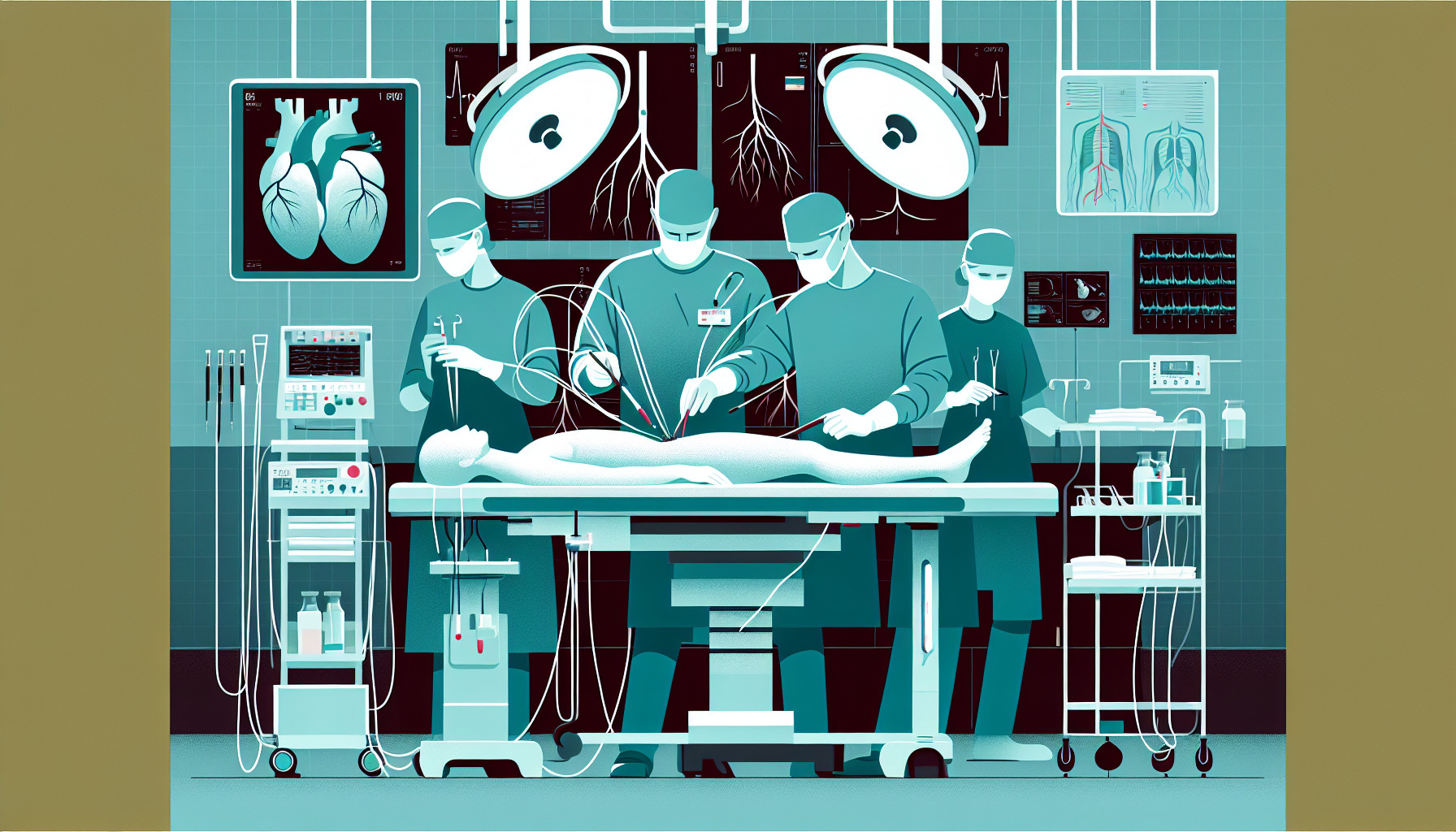Our Summary
The research paper discusses a surgical method for treating moyamoya disease, a rare, progressive blood vessel disorder. The approach used was learned from Dr. Hiroyasu Kamiyama and has been refined over time. In adults, a direct bypass method was used, whereas in children, a combination of direct and indirect bypasses was used. The surgery involved using the superficial temporal artery (STA) for multiple direct bypasses in the front and middle areas of the brain.
The research highlights that it’s important to use all available resources for the initial surgery, as secondary bypass using the STA is often not possible. The surgical procedure was refined to reduce complications and increase success rates. This included a better skin incision technique to reduce damage to the flap, and improved stitching to ensure better flow and lower the risk of blockage.
A technique called fish-mouth trimming was also used to create a wider opening and reduce the risk of ischemia (lack of blood flow). The paper emphasizes the importance of continuous training to enhance these surgical techniques to achieve the best outcomes for patients.
FAQs
- What is the surgical method discussed in the research paper for treating moyamoya disease?
- What are the differences in the bypass methods used for adults and children in the treatment of moyamoya disease?
- What improvements were made to the surgical procedure to reduce complications and increase success rates?
Doctor’s Tip
A helpful tip a doctor might tell a patient about vascular bypass is to follow post-operative care instructions carefully, including taking prescribed medications, attending follow-up appointments, and maintaining a healthy lifestyle to promote successful healing and recovery. It is also important to report any unusual symptoms or complications to your healthcare provider promptly.
Suitable For
Patients who are typically recommended vascular bypass surgery for moyamoya disease include:
- Adults with moyamoya disease who require direct bypass surgery in the front and middle areas of the brain.
- Children with moyamoya disease who may require a combination of direct and indirect bypass surgeries.
- Patients who have exhausted other treatment options and have progressive symptoms of moyamoya disease.
- Patients who are at a high risk of stroke or other complications due to their condition.
- Patients who have a suitable donor artery, such as the superficial temporal artery, for the bypass procedure.
Timeline
Before the vascular bypass surgery, the patient would have undergone various diagnostic tests to confirm the presence of moyamoya disease and determine the severity of the condition. This may include imaging tests such as magnetic resonance angiography (MRA) or computed tomography angiography (CTA). The patient would have also been evaluated by a vascular surgeon and neurosurgeon to determine the best treatment plan.
After the vascular bypass surgery, the patient would typically spend several days in the hospital for monitoring and recovery. They would be closely monitored for any complications such as bleeding, infection, or stroke. Physical therapy and rehabilitation may be recommended to help the patient regain strength and function in the affected areas. Follow-up appointments with the surgical team would be scheduled to monitor the patient’s progress and make any necessary adjustments to their treatment plan. Over time, the patient may experience improvements in their symptoms and quality of life as the blood flow to the brain improves.
What to Ask Your Doctor
- What are the potential risks and complications associated with vascular bypass surgery?
- How long is the recovery process after undergoing a vascular bypass procedure?
- What is the success rate of vascular bypass surgery for treating moyamoya disease?
- Are there any alternative treatment options available for moyamoya disease besides vascular bypass surgery?
- How many vascular bypass surgeries have you performed for moyamoya disease, and what is your experience and success rate with this procedure?
- What should I expect during the post-operative care and rehabilitation process following vascular bypass surgery?
- How long will it take for me to see improvements in my symptoms after undergoing vascular bypass surgery?
- Are there any lifestyle changes or medications I should consider after undergoing vascular bypass surgery to improve my overall vascular health?
- How often will I need to follow up with you after the vascular bypass surgery, and what kind of monitoring will be necessary?
- Are there any specific warning signs or symptoms I should watch out for that may indicate complications following vascular bypass surgery?
Reference
Authors: Yoshikawa K, Ota N, Noda K, Kamiyama H, Tanikawa R. Journal: No Shinkei Geka. 2025 May;53(3):522-529. doi: 10.11477/mf.030126030530030522. PMID: 40438015
